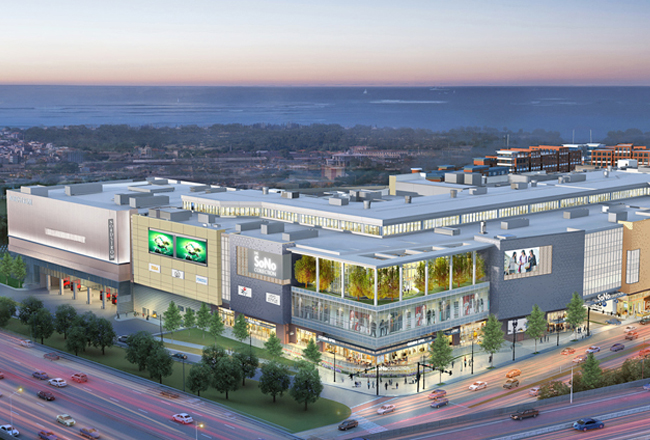Fairfield County”™s retail sector will be shaped over the next 12 months by a last hurrah in an approach to traditional retailing and new approaches to bringing consumers back to the brick-and-mortar environment.
In an interview with the Business Journal, Kim Galton, director of retail for Houlihan Lawrence”™s Commercial Group, pointed to Norwalk”™s SoNo Collection as “one of the last traditional malls that we will see built in New England.” The 700,000-square-foot retail center is under construction with a scheduled opening for October. And while Nordstrom and Bloomingdale”™s were announced as the development”™s anchor stores, the SoNo Collection”™s other tenants have yet to be announced.

“SoNo Collection will result in a 3 percent increase in available retail rental stock,” said Galton, who added that the one downside to this development is the potential for additional gridlock thanks to the mega-mall”™s location at South Norwalk Exit 15 on Interstate 95, which is already a congested area. “I”™m worried about the traffic patterns there.”
The arrival of SoNo Collection is counterbalanced with the conundrum facing the region”™s other traditional malls, as well as the surplus number of strip malls along the area”™s main commercial routes. “They need to figure out (the) need to reinvent themselves,” observed Galton, who noted that vacant retail spaces in these settings are being filled with a new breed of ephemeral tenants. “We are seeing many more pop-up stores there. Landlords are demonstrating more flexibility in asking rents and term lengths.”
Galton also traced a new wave of occupants moving into the local retail spaces, with a dominant presence of health and fitness businesses, food retailers specializing in healthy and nutritional items and stores that seek a more experiential retail relationship with customers. She added that some national retailers are also spinning off smaller brands into stand-alone stores, most notably the Bluemercury cosmetics line from Macy”™s, while the presence of e-commerce entities like Bonobo and Warby Parker have shown a blurring of online and traditional retailing.
But Galton acknowledged that not every vacant retail space will be filled by a retail tenant ”” and the erosion of national retailers is not being filled by an equal number of new store openings. In many cases, retail is giving way to other types of commercial real estate. Galton pointed to the growing number of medical walk-in centers for both general health and specialized focal treatments that have taken over properties that were created for retailers, and she noted the long-vacant IGA supermarket in Fairfield that is being repositioned as a franchise of the Goddard School, a chain of preschool institutions.
“Reinventing space (will be) key for the next five years,” she said.
Also key is a stable rent environment. Galton cited data from Costar that showed the average retail rent for the fourth quarter was roughly $36 per square foot, and she did not forecast “major increases or decreases.”
However, there is an anomaly in this picture: Bridgeport, the state”™s largest city, is the odd man out when it comes to new retail activity in Fairfield County.
“In Bridgeport, they are looking for more residential opportunities than commercial opportunities,” Galton said. “I don”™t think Bridgeport will be a target for more upscale retail.”


















